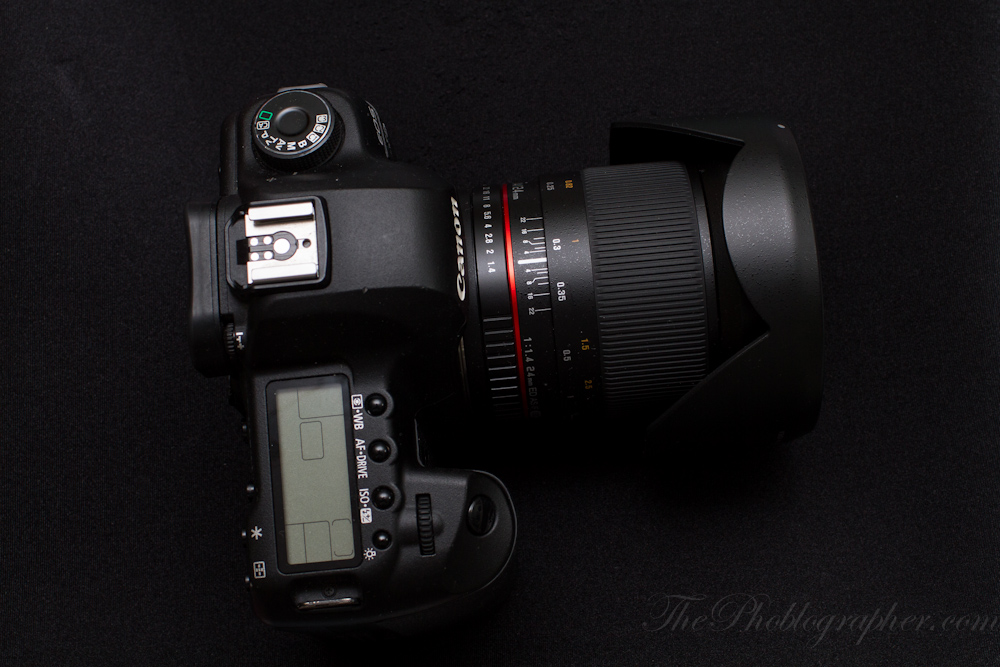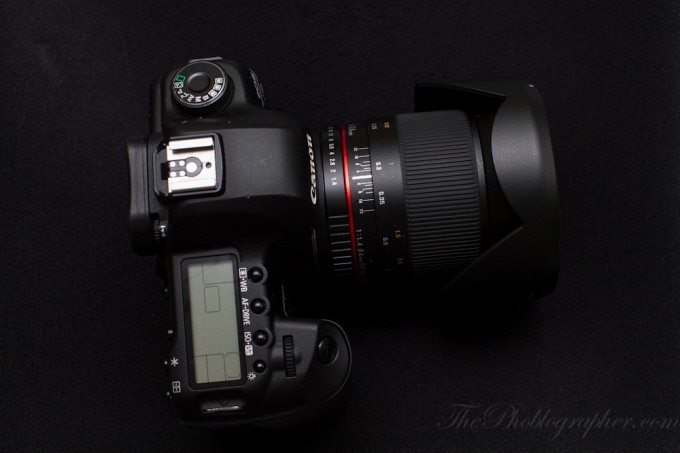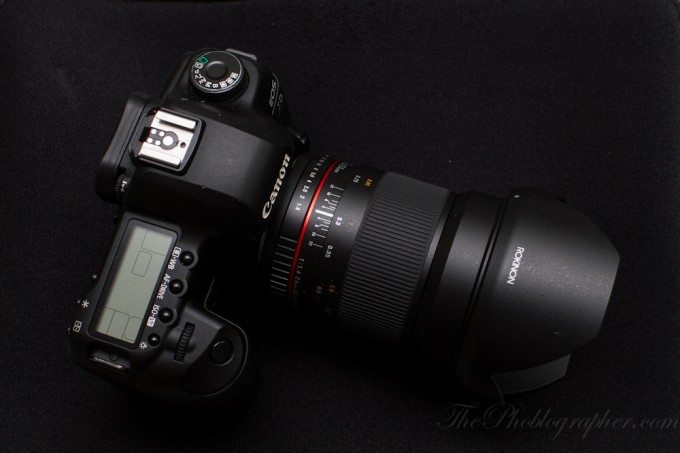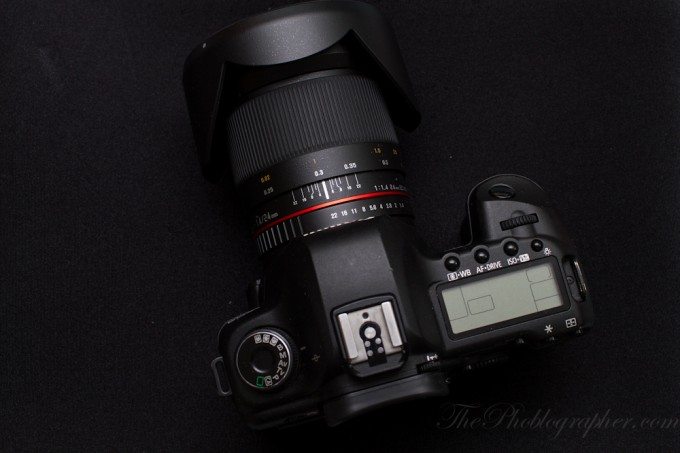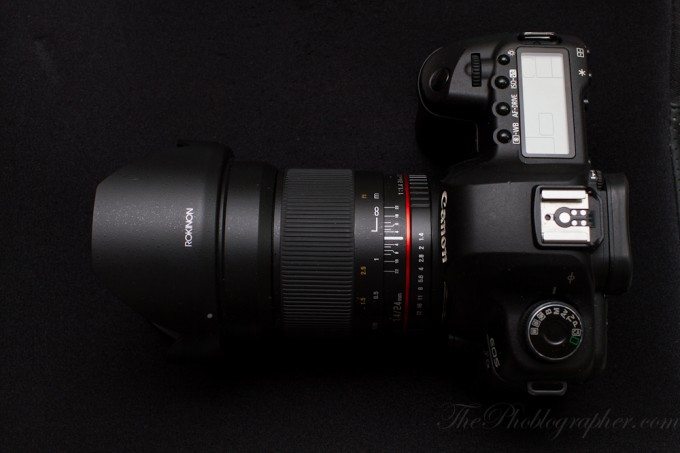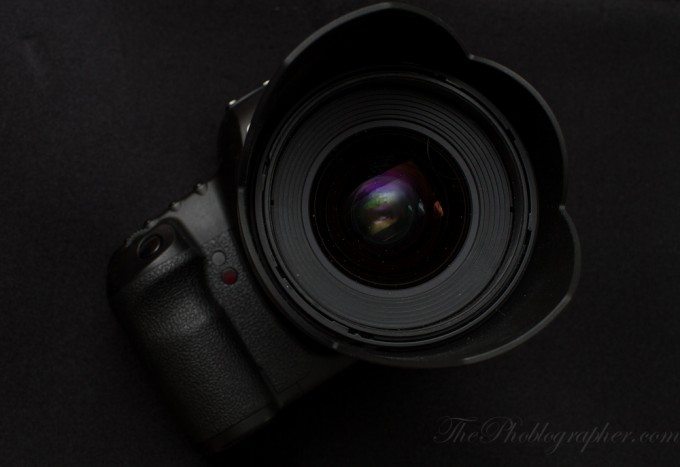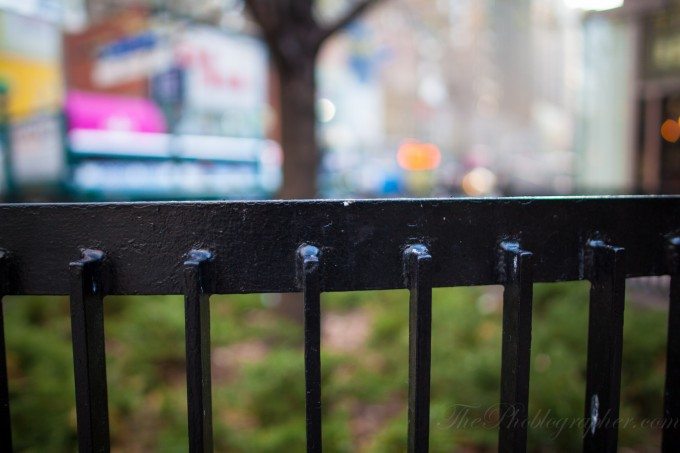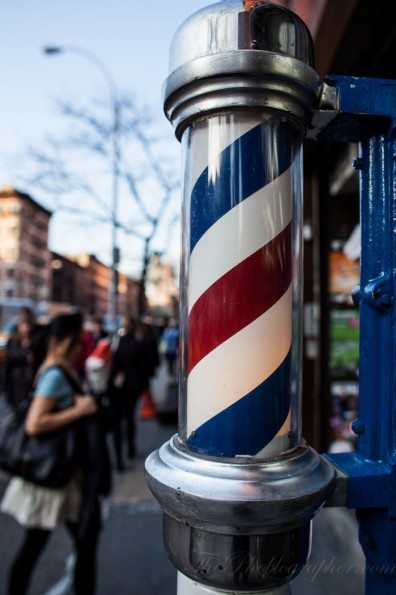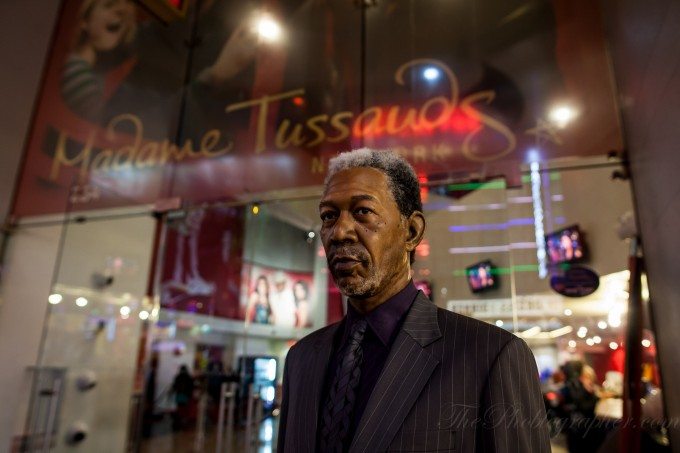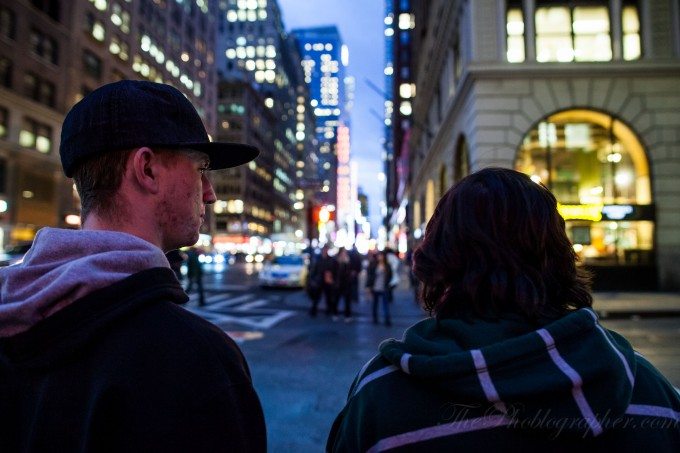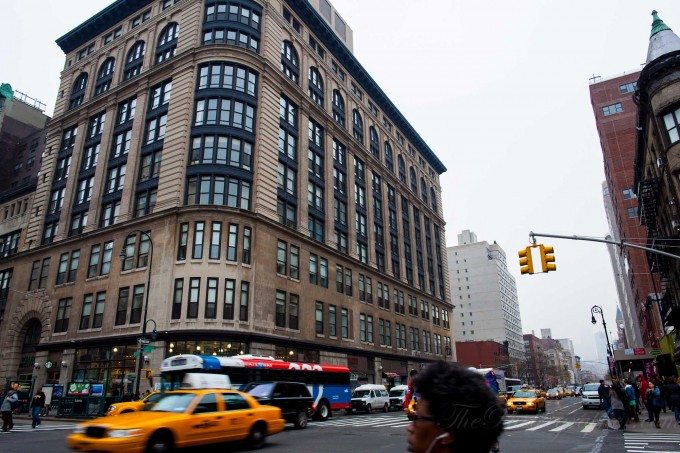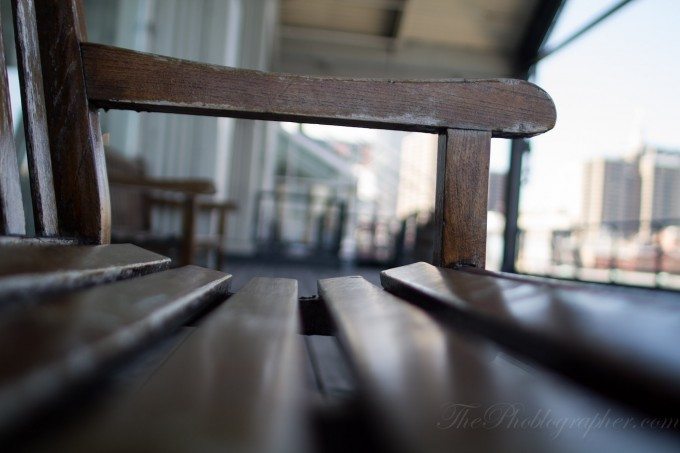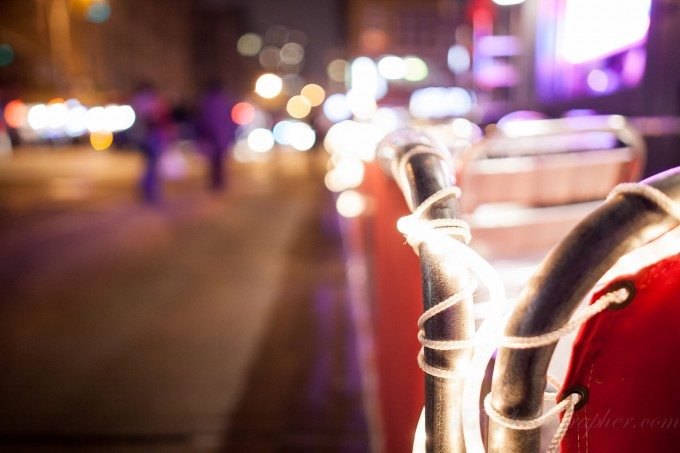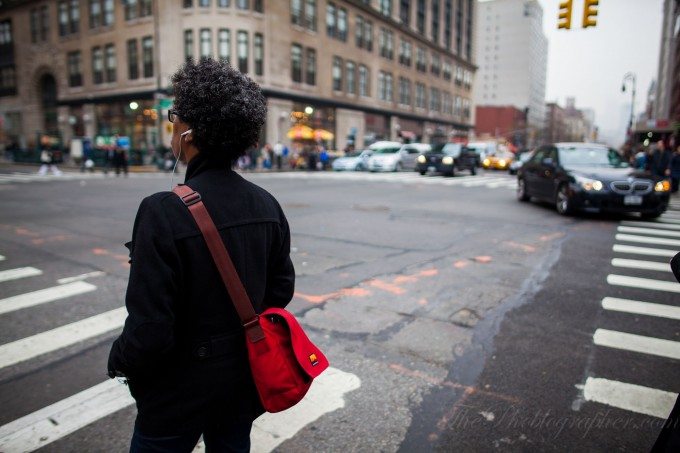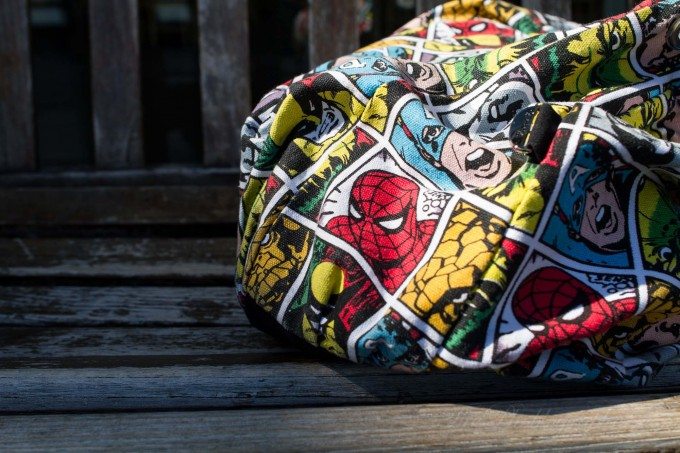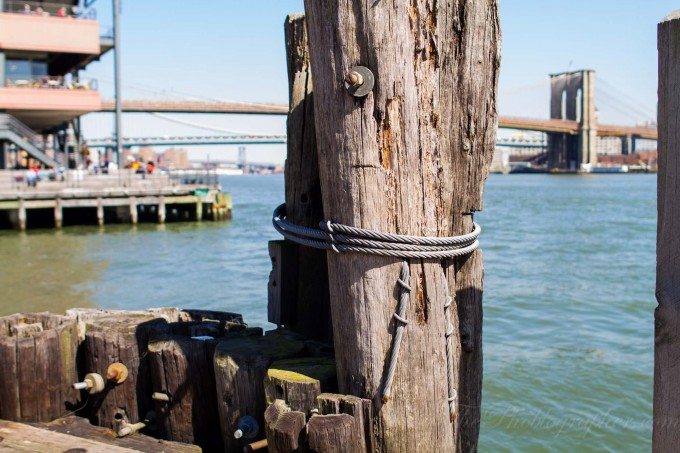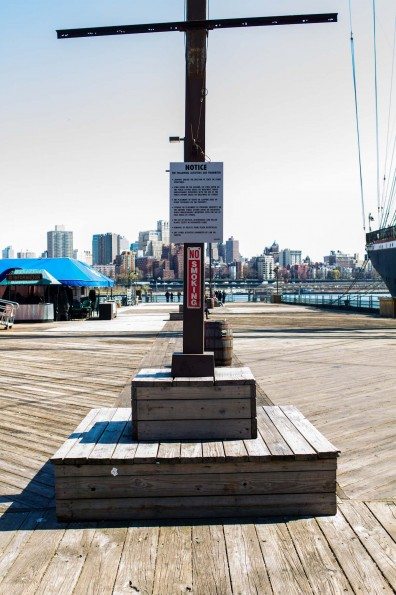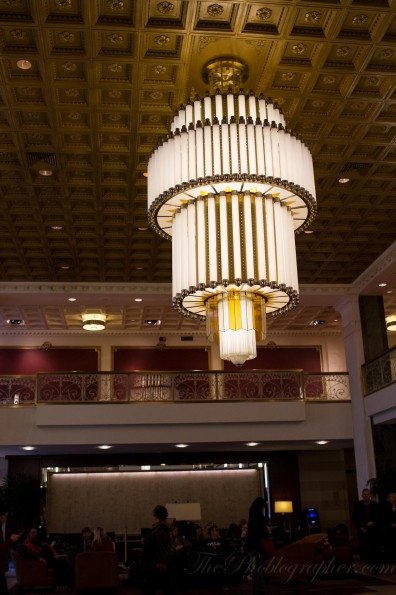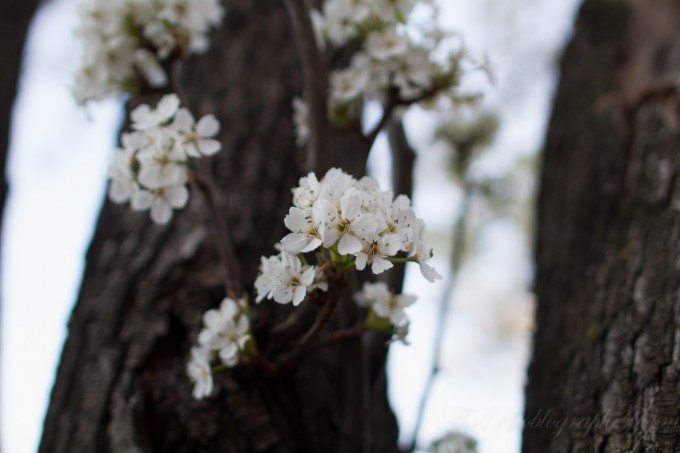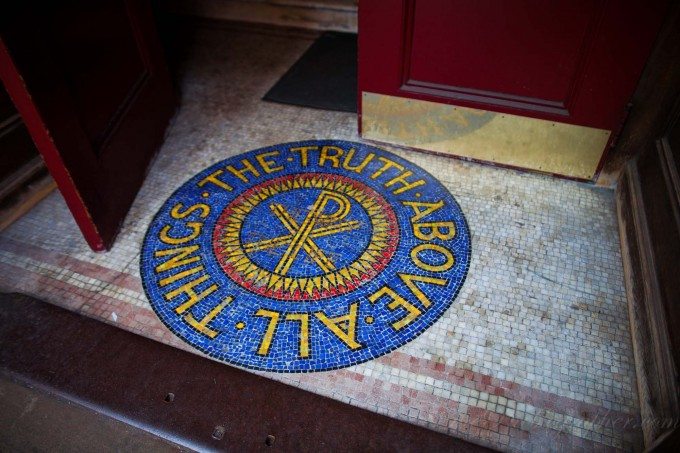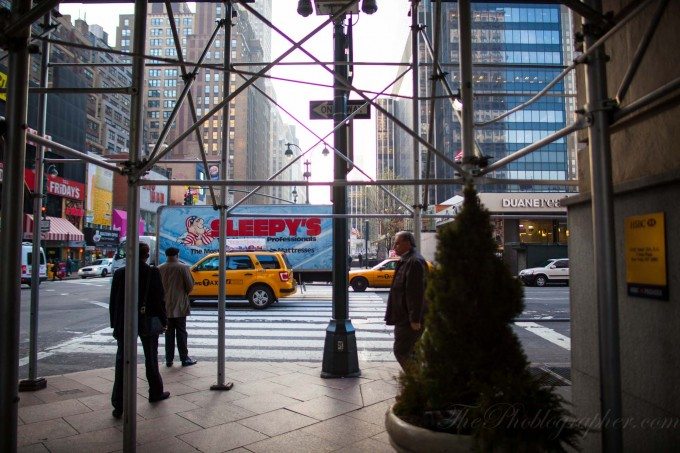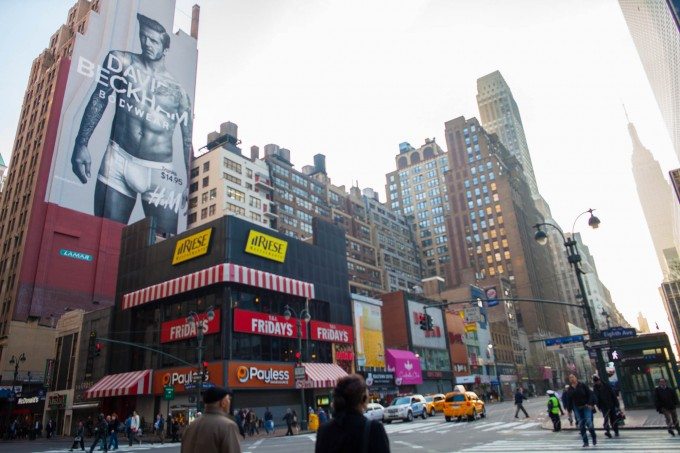As what other reviewers have been touting as one of the most exciting lenses to be released in a while at this focal length, the Rokinon 24mm f1.4 is an extremely affordable option compared to the Canon L version or the closest Zeiss version. Granted, all three are still different lenses: with two of the previously stated products being manual focus only.
The 24mm focal length is one that has been targeted to street photographers, documentary shooters, landscape photographers, and loads of others. But does this latest addition really do the job that most photographers want?
Gear Used
Tech Specs
Specs pulled from B&H Photo’s listing of the lens
| Features | |
|---|---|
| Image Stabilization | No |
| Autofocus | No |
| Tripod Collar | No |
| Physical | |
|---|---|
| Filter Thread | Front: 77 mm |
| Dimensions (DxL) | Approx. 3.27 x 3.84″ (83 x 97.5 mm) |
| Weight | Not Specified By Manufacturer |
Ergonomics
The Rokinon 24mm f1.4 isn’t a small lens, but it is about on par with Canon and Zeiss’s offerings. The lens is characterized by an extremely large focusing ring, a depth of field scale and an aperture ring.
In order to change the aperture, you’ll need to manually adjust the ring. The lens is not chipped to work with Canon DSLRs in terms of metering and AF confirmation despite the fact that the mount is for EOS cameras.
In practice, this caused metering issues at time with my 7D in Live View mode. What I see on the screen was very often not what I got in the photo; so I often needed to rely on the actual meter scale. What that meant in real life was focusing by magnifying an area, then metering and trying to make very careful movements to not throw the focusing off when shooting handheld.
Additionally, I should mention that the focusing scale didn’t seem to be totally accurate in practice. The best thing to do is to use an LCDVF. Even better: if your camera is hacked to use Magic Lantern, utilize the focus peaking function.
Otherwise, the lens is characterized by a large front element protected by a very large removable hood.
The entire exterior is made of plastic and the build quality feels on par with one of Sigma’s EX lenses. Canon’s 24mm f1.4 L feels a bit better and I’m tempted to say that you could physically destroy the Rokinon 24mm f1.4 with a Zeiss 25mm f2 and the latter would barely have a scratch on it, but I haven’t tried doing that.
Focusing
I tried this lens out on a couple of different cameras: the 5D Mk II, 7D and 5D Mk III. Focusing through the viewfinder is tough on all of the cameras except of the 5D Mk III. Though that in and of itself is a bold statement: please consider the following factors:
– I wear glasses (very strong ones).
– My vision probably isn’t just like yours.
However, focusing the lens with the 5D Mk III when shooting three feet and closer was extremely simple to do. Focusing further wasn’t as easy to do.
With the 5D Mk II and 7D, you’ll need a special focusing screen to make the absolute best of the matter. Or just use an LCDVF.
The focusing ring feels smooth, though my fingers are sensitive enough to feel a bit of the friction with the ball bearings inside. That won’t affect your focusing in real life though; it’s just an observation.
If you choose to not use an LCDVF or a focusing screen, then I strongly recommend that you switch the camera into Live View mode and if you don’t have Live View mode for those using older camera models, I suggest giving up for the most part.
It’s a major bummer that this lens isn’t chipped for autofocus confirmation, but my Rokinon rep told me that they are working on chipping every single lens that they have for Canon users.
So what does that mean in practice and sales:
– Non-chipped lenses will appeal more to the videography crowd because they’re using LCD screens anyway.
– Chipped lenses are more for the photography crowd because of just how much many of us need AF confirmation and can’t live without autofocus to begin with. Fanboys that say otherwise on forums are full of themselves.
Ease of Use
Canon 5D Mk II
Focusing this lens on the 5D Mk II isn’t so easy through the viewfinder. You’ll need to use an LCDVF or a special focusing screen as stated many times above. Also keep in mind that this is a full frame camera and a lens that is meant for full frame use.
When trying to rely on the focusing and distance scale, you’ll need to also consider and hope that the version you have is accurately calibrated. As I saw on a previous fisheye lens from the company, the focusing can be off a bit. It’s a quality control issue that the company can surely fix.
With that said though, this lens can focus very closely. You can essentially get right in someone’s face and not realize just how close you are.
The best thing to do when shooting is to stay absolutely still, ensure that your subject is totally still and then shoot. Hyperfocal length shooting and zone focusing can be useless unless you’re stopped down beyond F8. Those methods are the preferred approaches for many street photographers.
The lens feels very balanced on the 5D Mk II as well.
Canon 5D Mk III
Though I’m not allowed to show any of the photos that were shot with the 5D Mk III (ethical reasons), I did get to test the lens out on a body at work. Manual focusing is extremely easy with it due to the excellent viewfinder. In fact, I was able to get my images mostly in focus with no problems due to how great the finder is.
The downside: my images weren’t always totally in focus but they were extremely close. This has to do more with my deteriorating vision in my eyes though.
Sadly, the focusing screen in the 5D Mk III cannot be changed out; this probably has to do with the metering and focusing system.
Lastly, the lens feels excellent on the 5D Mk III due to the ergonomic changes making it similar to that of the Canon 7D.
Canon 7D
Focusing this lens on the 7D is far easier to do than on the 5D Mk II, though you’ll still get hits and misses and it isn’t as easy to focus as on the 5D Mk III. However, the lens is perhaps best balanced on the 7D in terms of weight.
Image Quality
The image quality overall from this lens is extremely good: when you’re in focus. It’s once again a shame that the lens isn’t chipped and I can hardly get over that. Once again, when used with a focusing screen or LCDVF you’ll have more luck.
Wide Open Shooting
Wide open performance for this lens is a tad bit disappointing considering that I’ve shot with many other lenses wide open and they were much sharper. Indeed, this one comes up a bit lacking. If I had to place it somewhere on a scale, it would be on par with Canon’s 85mm f1.8 lens when shot wide open. With that said, it’s good, but it can and should be much better.
Many lenses when shot wide open tend to color fringe. The Rokinon 24mm f1.4 isn’t exempt from that problem, though it controls it very well and you won’t see it unless you’re looking at your images at 100%.
And in real life use, unless you’re shooting for NASA or the latest Urban Outfitter’s campaign, you’re probably not doing that.
Consider the fact that you’re also going to suffer from a bit of vignetting that won’t be totally gone until around f4.
Once again though, I need to tell you guys to chill the hell out on the forums about these issues: you can fix them in a little piece of software called Lightroom 4. And you should probably get it instead of bitching on a forum.
Wide open though, the bokeh looks absolutely wonderful and incredibly film-like. The above and below photos were shot on at Canon 5D Mk II while carefully focusing.
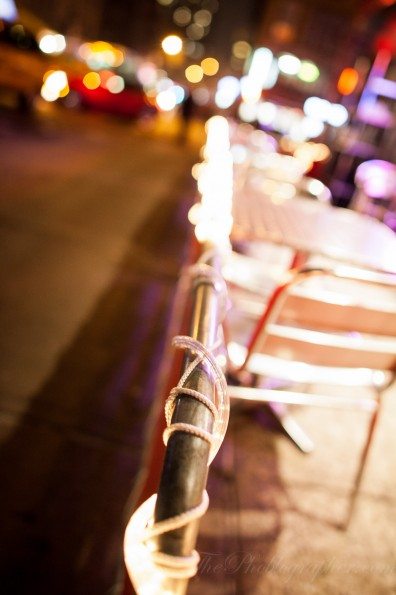 Indeed, the lens is wonderful wide open as long as you say your Hail Mary in order to get the image in focus.
Indeed, the lens is wonderful wide open as long as you say your Hail Mary in order to get the image in focus.
I did shoot a bit of video with the lens and the footage looks wonderful. I was asked to not show it though.
Judging from the photo quality though, videographers will have a field day with this lens not only due to the wide open performance, but also for the beautifully sharp scenes they’ll be able to create with this lens. It will be much easier for them to focus while shooting video.
In fact, I’m going to go as far as saying that when coupled with the LCDVF, it was much easier to focus this lens: especially with the framelines that the 16:9 ratio creates because of how HD video works.
For photographers, you’ll need to raise the clarity and sharpness bars a bit in Lightroom 4, but that shouldn’t be too much of an issue. For the money that you’re paying for a lens like this, you get what you pay for though when shooting wide open. Zeiss and Canon’s offerings are both more expensive and over the $1,000 mark. But Rokinon was able to bring the price down to under the 1K mark and still achieve excellent image quality wide open.
My guess is that most people buying this lens though wont’ be shooting wide open due to the sheer difficulty of how hard it is to get something in focus and the heartbreak you’ll suffer in post when looking at your images at 100%. With that said, the lens also seems to add a bit of film grain to it the way that much older lenses used to. For aesthetic purposes, this tells me that this lens could have very well been designed for videographers. And if this site were primarily targeted towards videographers, I’d be head over heels for this lens’s wide open performance.
Slightly Stopped Down
When stopping the lens down between f2.8 and f5.6, you’ll see the optic really start to shine. This is also where the color rendition also starts to become a bit better. Though to be fair, I felt that the color rendition overall was best on my 5D Mk II (even wide open.) Skin tones were best on the 5D Mk III.
The above photo was shot with the Canon 5D Mk II, and for real life use, it also shows very little distortion.
In fact, even at around F2, the lens can really amaze the user.
The Rokinon 24mm f1.4 perhaps reaches it critical peak at around f4 and retains its sharpness down to f8.
At this point is also becomes a bit easier to focus through the viewfinder of the 7D, but not so much on the 5D Mk II. Keep in mind that the further you stop the lens down, the darker your viewfinder will become due to the nature and construction of the lens.
Extra Image Samples
Informal Sharpness Test
This test was conducted on the Canon 7D for the reason that most people out there use cropped sensor cameras; and so this test is being targeted to you users. I put the camera down on the planks, kept the ISO to 100, the focusing at the same place, and just switched the aperture out. The camera was set to aperture priority.
Once again, this is an extremely informal test.
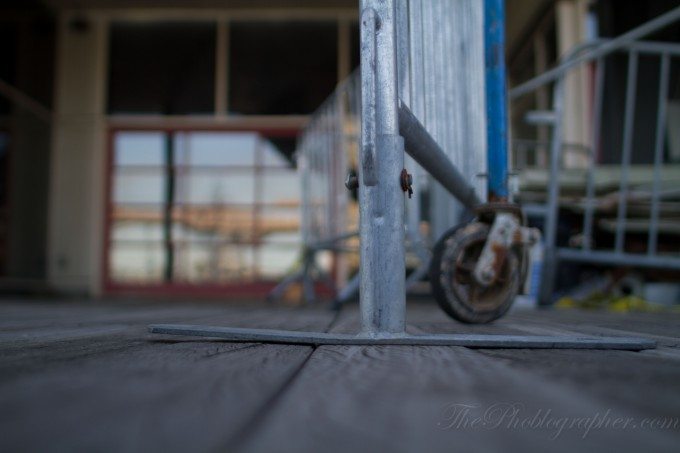
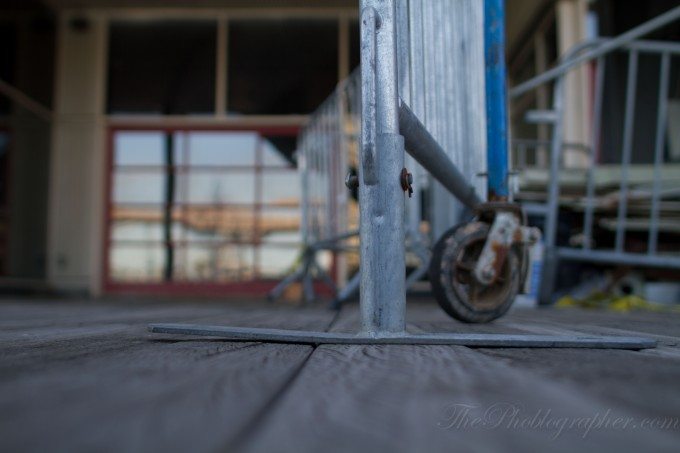
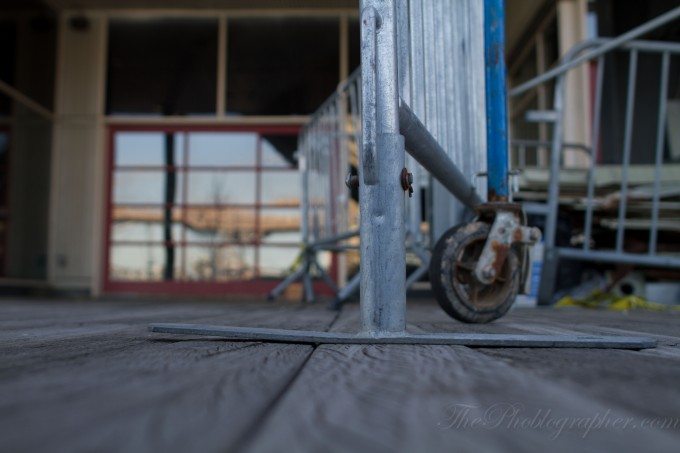
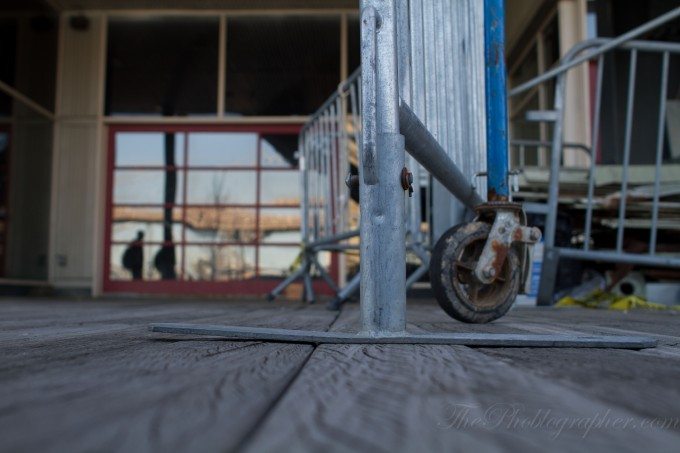
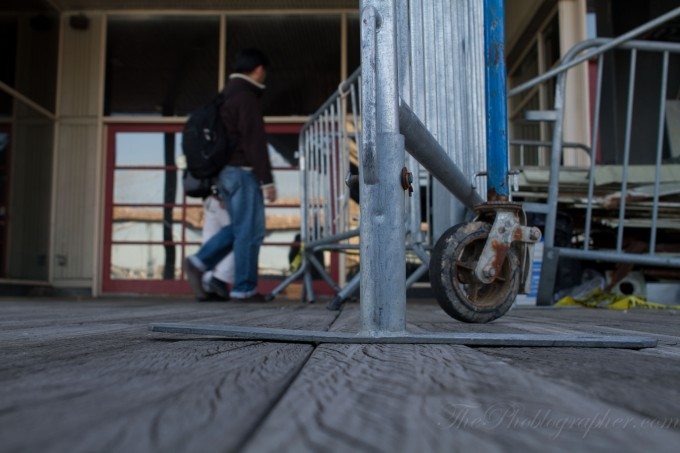
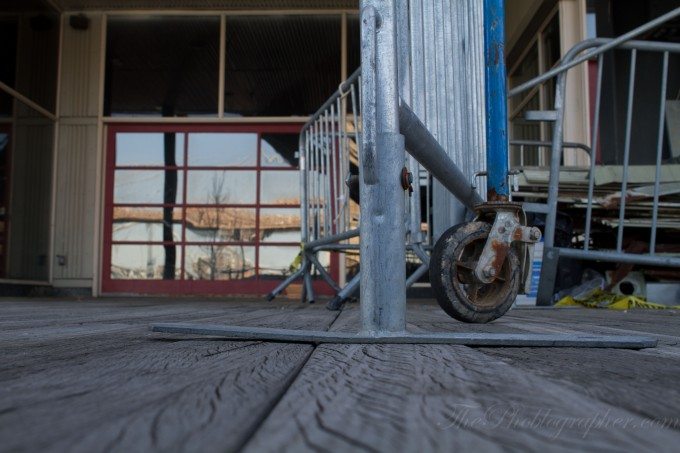
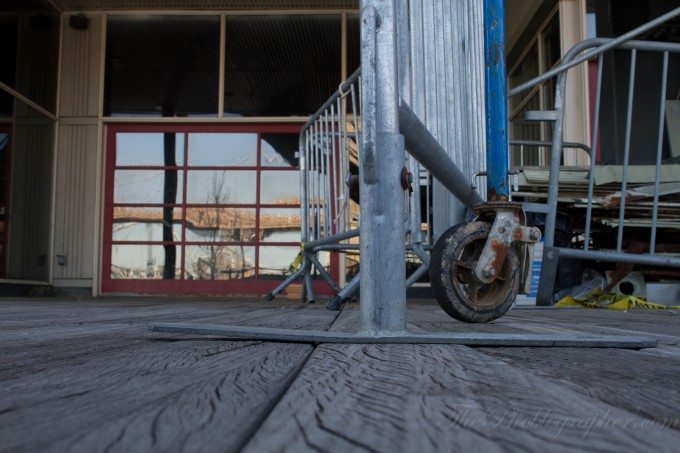
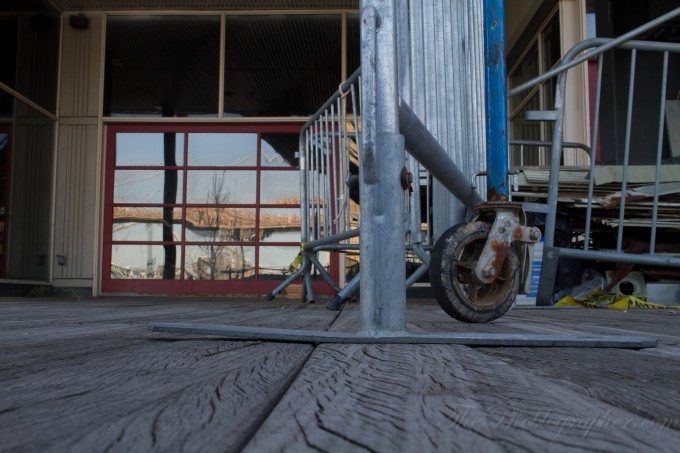
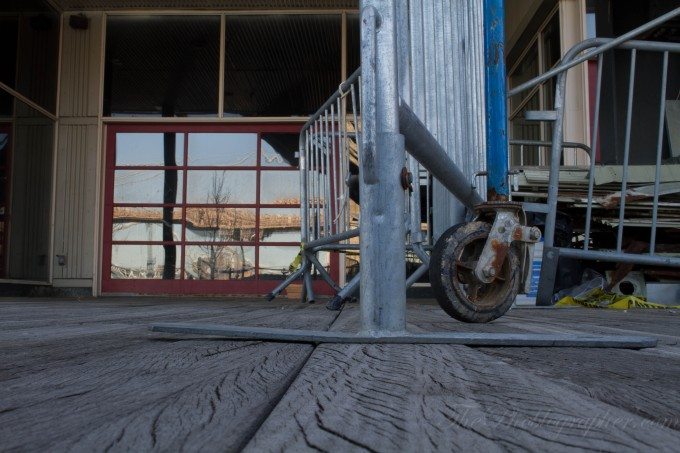
Conclusions
Is this lens for everyone? No. The frustrating focusing issues for all but those that own the 5D Mk III may indeed cause major frustrations equivalent to those dealing with a bad relationship. If the lens were chipped for focus confirmation, Rokinon would have an all out winner that Zeiss and Canon need to start paying great attention to for still photography.
For videography though, I’m convinced that a set of Rokinon primes is all that one needs to make a movie; especially due to the aesthetical film-like grain that the lens produces due to the design of the elements.
The image quality of the lens is fantastic, though it could be better when shooting wide open. Color rendition depends on what color profile your camera is using. For the most part, mine are all customized to my own liking. Your results may vary.
The build quality is also fairly decent, and it’s what you could expect for a lens at this price for around $700.
Distortion control is also very good.
In the end though, the only thing preventing me from giving this lens an Editor’s Choice is the lack of AF chipping. Otherwise, it should be in the bag of every serious videographer.
Items Mentioned in this Post:
Please Support The Phoblographer
We love to bring you guys the latest and greatest news and gear related stuff. However, we can’t keep doing that unless we have your continued support. If you would like to purchase any of the items mentioned, please do so by clicking our links first and then purchasing the items as we then get a small portion of the sale to help run the website.


